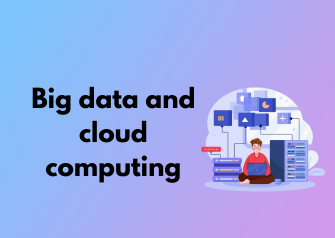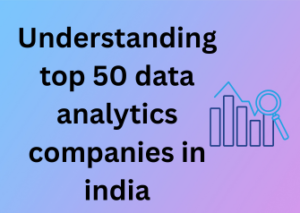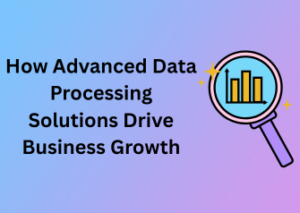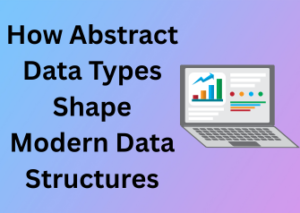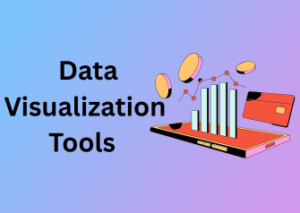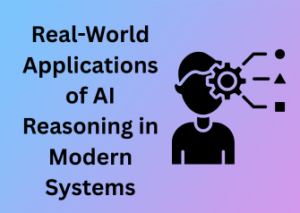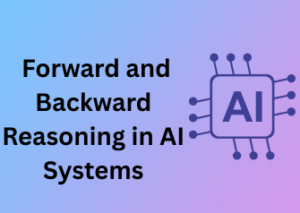Once upon a time, managing data was a task that involved dusty filing cabinets, room-filling servers, and endless racks of physical storage. Businesses, small and large, would devote entire sections of buildings to house these data archives, often requiring meticulous upkeep, redundant backups, and, of course, lots and lots of square footage. But just as the world moved from paper maps to GPS, data storage has gone digital—and oh, how far we’ve come!
The journey from storage rooms to the cloud is not just a story of technological advancements; it’s a tale of human innovation, problem-solving, and the ever-growing hunger for efficiency. Let’s take a walk down memory lane and explore how this evolution took place.
The Pre-Cloud Era: Storage was Heavy-Duty Business
In the early days, data was stored on physical media such as floppy disks, CDs, and hard drives. For larger organizations, this meant investing in bulky, on-premise data servers that lived inside specialized rooms. These servers weren’t just costly to set up—they needed constant maintenance, cooling systems to prevent overheating, and an IT team ready to handle breakdowns or failures.
Oh, and scalability? Not so simple. If businesses outgrew their existing servers, they had to invest in new, expensive hardware—a process that slowed growth, increased costs, and required major strategic planning. It wasn’t exactly what you’d call nimble or flexible, that’s for sure!
The Internet Arrives: Opportunities Meet Challenges
The rise of the internet set the stage for a digital revolution in storage. Suddenly, data could be shared faster, more efficiently, and (eventually) without needing physical storage exchanges. Virtual storage options started popping up, offering an exciting alternative to the weight of on-prem infrastructure. However, there were growing pains—early attempts at cloud storage suffered from limited capacity, high costs, and low accessibility.
But, as they say, necessity is the mother of invention. As businesses became more data-driven, there was a clear need for a solution that could keep pace. Enter: the cloud.
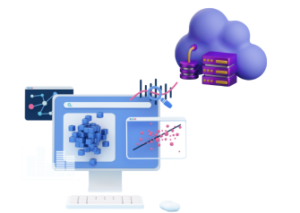
The Cloud Takes Flight: A Game-Changer for Data Management
What if data storage could be on-demand? What if it could scale automatically, no installation required? And what if accessibility wasn’t tied to the location of bulky servers? These questions formed the blueprint for what we now call cloud computing. By storing data in centralized, internet-connected servers, companies could free themselves from physical constraints while gaining agility, scalability, and cost-efficiency.
- Easy Access: Employees can now access files from anywhere in the world, as long as they have an internet connection.
- Disaster Recovery: The cloud makes automated backups a breeze, significantly reducing the risk of losing critical information due to hardware failure.
- Cost Savings: Pay-as-you-go models let businesses adapt storage capacity to meet their needs, avoiding unnecessary expenses.
The Perfect Marriage: How Cloud Computing Simplifies Big Data Handling
Imagine you’ve got a giant jigsaw puzzle with pieces scattered all over your living room floor. Stressful, right? Now, what if a magical table appeared right in the center, organizing your puzzle pieces neatly and giving you all the tools you need to put it together? That’s pretty much what happens when cloud computing meets big data. It’s like the ultimate power couple in the tech world, simplifying the overwhelming complexities of managing colossal amounts of information. But what makes this partnership so perfect? Let’s dive in.
Breaking Down the Complexity of Big Data
Big data is a big deal—think of volumes of data growing every second of every day. From social media posts to sensor readings on smart devices, it piles up rapidly. Managing all of this on traditional systems? Well, that’s like trying to stuff an elephant into a shoebox. Cloud computing swoops in to save the day by offering the space, flexibility, and power to handle it all. Gone are the days of clunky server rooms and overburdened systems. With the cloud, all your data is stored, processed, and analyzed seamlessly in one accessible location.
The Cloud Advantage
Let’s get into the nitty-gritty of why cloud computing is basically big data’s best friend:
- On-demand resources: Need more storage or processing power? With cloud services, you can scale up or down as needed without waiting weeks for new hardware installation. It’s instant gratification for your data needs.
- Global accessibility: Whether your team is in New York, Tokyo, or Mumbai, cloud computing ensures everyone has access to the same data and tools. It’s a truly global solution for an interconnected world.
- Real-time updates: Working with big data often means dynamic, ever-changing information. The cloud enables real-time processing, allowing you to make decisions based on up-to-the-second intel.
Streamlining Data Handling for Everyone
Let’s face it—nobody has time for overly complicated systems. Big data can be intimidating, but the cloud helps level the playing field. You don’t need to be a coding wizard or an IT genius to harness its power. Most cloud platforms offer user-friendly interfaces, built-in big data tools, and seamless integration options for third-party software.
Think of it like this: instead of spending hours setting up, troubleshooting, and maintaining servers, you simply log in to your cloud service, upload your data, and let the system do its thing. Big data handling becomes less of a headache and more of an opportunity to uncover insights and innovate.
Collaboration and Innovation
One of the most beautiful things about this partnership is how it fosters collaboration and innovation. Teams spread across multiple departments or even continents can work together seamlessly, analyzing data and brainstorming solutions in real time. What’s more, cloud platforms often incorporate cutting-edge technologies like artificial intelligence (AI) and machine learning (ML), making it easier to extract actionable insights from heaps of raw data.
Scalability Matters: Tackling Growing Data Without Breaking a Sweat
Imagine running a small, cozy café. Suddenly, your city hosts a world-famous festival, and your little café is flooded with thousands of new customers. Sound overwhelming? Now, replace “customers” with “data.” That’s what many companies face in today’s digital age. The amount of data generated across industries is growing at an astronomical rate, and businesses need solutions that can handle this growth seamlessly. Enter scalability: the secret sauce that helps organizations manage their growing data demands.
What Is Scalability, and Why Should You Care?
In the digital world, scalability refers to the ability of a system to grow or shrink based on demand. With big data continuously expanding, businesses need infrastructure that doesn’t falter under pressure. Scalability ensures your systems can handle large amounts of data today, tomorrow, and even next year—without constant overhauls or ballooning costs.
For companies leveraging cloud computing, scalability is practically a built-in feature. Unlike traditional on-premise servers that require you to physically add new hardware when you outgrow your storage or computing capacity, cloud solutions scale up or down on demand with just a few clicks.
Types of Scalability
- Vertical Scalability: Think of this as upgrading your car engine. In cloud terms, you add more power (CPU, memory, or storage) to the existing system. This approach is great for short-term performance boosts.
- Horizontal Scalability: This involves adding more cars to your fleet instead of focusing entirely on a single vehicle. In practice, that means spinning up additional servers or instances to divide the workload. It’s ideal for companies experiencing rapid growth or fluctuating data demands.
Both approaches can be seamlessly implemented in the cloud, providing flexibility and resilience as your data needs change.
How Cloud Computing Makes It Easy
With traditional infrastructure, scaling was a logistical and financial headache. You had to plan months in advance to estimate your processing needs, invest in expensive hardware, and often deal with wasted capacity during slow periods. Thanks to the cloud, those days are behind us.
Cloud platforms like Amazon Web Services (AWS), Microsoft Azure, and Google Cloud offer features like autoscaling—automatically adjusting computing power and storage based on demand. Having a sudden influx of website visitors during a holiday sale? No problem! Autoscaling ramps up your resources to ensure everything runs smoothly. Once traffic settles down, it optimizes costs by reducing capacity.
Best Practices for Scalable Big Data Systems
- Design for Scale from the Start: Build applications and systems with scalability in mind. Cloud-native architectures based on microservices are inherently more scalable than traditional monolithic designs.
- Use Predictive Analytics: Leverage analytics tools to better predict when your data loads will spike, ensuring your resources can handle the increase.
- Monitor Performance: Regularly track your resource usage with cloud monitoring tools. They provide real-time insights, helping you stay ahead of potential bottlenecks.
Data Security in the Cloud: Busting Myths and Building Trust
Let’s face it—when it comes to putting sensitive, business-critical information on the cloud, one of the biggest concerns that comes up is security. It’s a common topic of debate and, honestly, there’s a lot of misinformation out there that can make anyone hesitant. But here’s the good news: cloud providers have leveled up their security game, often surpassing what most businesses can achieve with on-premises solutions. Let’s bust some myths and break down how the cloud can keep your data safe while giving you peace of mind.
Myth: The Cloud Isn’t Secure Enough
This has to be the reigning champion of cloud-related myths. Many people assume that just because their data isn’t stored on physical servers they can see or control, it’s inherently at risk. The reality? Major cloud service providers, like AWS, Microsoft Azure, and Google Cloud, invest billions of dollars every year in advanced security measures. These companies employ top-notch experts, state-of-the-art encryption, and strict access controls that are often out of reach for most organizations managing their own infrastructure.
The key takeaway? The cloud is not inherently insecure—it’s only as secure as the provider you choose and the precautions you take to configure your environment properly.
Trust Building Through Certifications and Standards
Another important point when it comes to cloud security is compliance. Trusted providers adhere to global security standards, like:
- ISO 27001: A gold-standard certification for information security management systems.
- GDPR: Compliance with European Union regulations for protecting personal data.
- SOC 2: A rigorous standard for handling customer data with strict policies around security and confidentiality.
- HIPAA: A regulatory framework for safeguarding sensitive healthcare data.
Always look for these certifications when selecting a cloud provider—it’s a great way to ensure that your data will be handled with the utmost care.
Encryption: Your Data’s First Line of Defense
Here’s something cool: in the cloud, your data is often encrypted both at rest (when stored) and in transit (when moving from one place to another). This means even if someone tries to intercept your data, it would look like gibberish to them. And guess what? Many providers even give you the option to manage your own encryption keys if you’d like complete control.
Collaboration is Key
Of course, it’s not all on the service providers. As cloud users, businesses also have a role to play. Here’s how you can step up your security game:
- Set Up Multi-Factor Authentication (MFA): Add an extra layer of protection by requiring users to verify their identity in multiple ways.
- Regularly Audit Permissions: Avoid giving excessive access to people who don’t need it. Limiting access can reduce exposure to breaches.
- Stay Updated: Monitor configurations and update software to prevent vulnerabilities.
Why Trust Matters
At the heart of cloud security is trust—the trust businesses place in service providers and the trust they build with customers by keeping their data safe. When you use a secure cloud environment, you signal to your customers that you value their privacy and are invested in protecting it.
Real-World Use Cases: How Businesses Thrive with Big Data in the Cloud
Let’s take a closer look at how businesses are leveraging both big data and cloud computing to reach new heights. Big data and the cloud aren’t just buzzwords; they’re practical tools that drive innovation, improve efficiency, and open doors to endless opportunities.
How Are Businesses Using Big Data in the Cloud?
The combination of big data and cloud computing is a powerhouse for any organization, but you might wonder: how exactly do companies use this combo? Here’s a glimpse into the real-world impact:
1. Personalized Marketing Campaigns
Imagine walking into your favorite coffee shop and being greeted with an email promo for the drink you just purchased. Companies like Spotify and Amazon are experts in using big data stored in the cloud to analyze your preferences and send personalized recommendations. By syncing data insights with cloud infrastructure, businesses create marketing strategies that feel tailor-made for you. The result? Happier customers and brand loyalty that keeps growing.
2. Streamlining Operations and Logistics
Retail giants like Walmart manage overwhelming quantities of transaction data daily. Using cloud-based big data analytics, they can monitor inventory levels, track shipment times, and predict product demand. This ensures shelves are stocked when you need that box of cereal—without overstocking and wasting resources. Now that’s operational efficiency!
3. Tackling Issues in Healthcare
The healthcare industry benefits tremendously from big data in the cloud. Think wearable fitness trackers that share real-time health data or hospitals monitoring patient outcomes through cloud-based platforms. Big data analysis can even identify disease outbreaks or suggest potential treatments by analyzing medical records. It’s like having a team of digital superheroes improving patient care every second.
4. Revolutionizing the Entertainment Industry
Netflix, anyone? Streaming platforms are pros at using big data hosted in the cloud to learn your watching habits and curate recommendations. Cloud computing ensures these massive libraries of data are accessible and scalable, so whether 10 or 10 million people are watching, the user experience remains smooth. Plus, predictive analytics allow companies to decide what original content will resonate with viewers.
Why the Cloud is Key
Yes, big data is a treasure trove, but without the cloud, it’s like trying to store an ocean in a fishbowl. The cloud ensures scalability, flexibility, and cost-efficiency. Businesses don’t have to buy or maintain endless servers—the cloud grows with them, handling skyrocketing data without breaking a sweat. Plus, with real-time data processing capabilities, companies are better equipped to make informed decisions faster than ever.
The Cost Factor: Making the Most Bang for Your Buck
Let’s face it—the sheer scale of big data and the infrastructure behind cloud computing can make you feel like you’re staring at a blank check with unlimited zeros. And yet, here’s the good news: the cloud isn’t just about data storage and computing power; it’s also about optimizing costs in ways you might not even realize. That’s why understanding the cost factor and how to get the most value is crucial as you dive into the world of big data using cloud solutions.
Why Cloud Costs Seem Daunting at First
One of the first things people notice about cloud services is the pay-as-you-go pricing model, where you’re charged based on how much you actually use. Sounds great, right? But without proper planning, costs can creep up. For instance, if your system generates huge amounts of data each day, consistently storing everything or running analytics without checks might inflate your bill in ways you didn’t expect.
That said, this flexibility is what makes cloud computing advantageous. You only pay for what you need—unlike traditional on-site storage, which often forces you to pour money into hardware, maintenance, and IT resources, even when they’re underutilized.
Smart Strategies to Optimize Costs
Want to keep your cloud costs in check without sacrificing value? Let’s go over some tried-and-true strategies that ensure you make the most out of your investment:
- Know What You Need: Start by assessing your business needs and data requirements. For instance, do you need low-latency, real-time data processing, or can you store some data in cheaper, “cold” storage for occasional access? Picking the right tier of service matters—and cloud providers offer plenty of customizable options to fit your budget.
- Take Advantage of Auto-scaling: Cloud platforms often have tools that automatically scale services up or down depending on demand. If your traffic spikes during certain times of the year (think holiday sales!), auto-scaling ensures resources expand temporarily—and contract when they’re no longer needed—to avoid paying for unused capacity.
- Monitor Your Usage Regularly: Don’t let costs catch you off guard. Many cloud providers, such as AWS, Azure, and Google Cloud, offer detailed cost breakdowns. Use these insights to identify unnecessary spending and tweak configurations in real time.
- Leverage Reserved Instances and Discounts: For predictable workloads, prepaid plans (like reserved instances) can save you a significant chunk of money compared to on-demand pricing. Similarly, exploring provider-specific discounts could reveal hidden avenues for cost savings.
Get Value without Compromising Quality
Remember, optimizing for cost doesn’t mean cutting corners. For example, storing data in a less expensive facility that’s geographically far away might cost less upfront, but higher latency could disrupt important applications. So, balance your needs carefully—partnering with an experienced cloud provider or consultant can make a world of difference.

Trends to Watch: What’s Next for Big Data and Cloud Computing?
Hello there, friend! Let’s dive into the exciting world of the future. Big Data and cloud computing are shaking things up, and today, we’re going to explore the trends shaping what’s next for these powerful technologies. Innovation doesn’t stop, and neither should your curiosity. So grab a cup of coffee, and let’s chat about the future (trust me, it’s fascinating!).
1. Edge Computing Takes Center Stage
You’ve probably heard of the cloud, but what about the “edge”? Edge computing is one of the hottest buzzwords in tech right now. Think of it like this: instead of sending all data to a centralized cloud for processing, some computations happen closer to where the data is created—on the “edge.” Why does this matter?
- It boosts speed: Faster processing means real-time data analysis.
- It reduces latency: Your smart devices, apps, or sensors can react instantly.
- It enhances efficiency: Less data sent to the cloud means lower bandwidth usage and fewer costs.
In a world driven by IoT (Internet of Things) devices, edge computing and Big Data are joining forces to make your connected home, self-driving car, or smart factory smarter—and faster.
2. AI and Machine Learning Supercharging Big Data
Let’s face it: Big Data alone is just, well, big. It’s AI and machine learning (ML) that transform those massive data sets into actionable insights. As Big Data grows, these technologies are evolving to keep pace. Emerging trends include:
- Automated Analytics: AI is stepping up to simplify analytics, making it easier for businesses to understand and act on the data.
- Predictive Insights: ML algorithms are getting better at forecasting trends, customer behavior, and even potential failures—keeping businesses one step ahead.
- Personalized Experiences: Whether it’s Netflix recommending your next binge or a virtual assistant predicting your needs, AI+Big Data = next-level personalization.
Our advice? If you work with data (and honestly, who doesn’t these days?), embracing AI-powered cloud tools is the way forward.
3. Multi-Cloud Strategies are the New Normal
Gone are the days of putting all your eggs in one cloud provider’s basket. Businesses are now adopting multi-cloud strategies—using a mix of public, private, and hybrid clouds. Why? It gives them:
- Flexibility: Need specialized tools from another provider? No problem.
- Risk Reduction: If one cloud platform has downtime, others can pick up the slack.
- Cost Optimization: Companies can shop around to get the best value for specific services.
Tip: If you’re planning to move to multi-cloud, focus on tools that make interoperability smooth. Think containers, Kubernetes, and APIs.
4. Sustainable Solutions for a Greener Tomorrow
Tech innovation is cool, but so is saving the planet, right? As Big Data and cloud computing grow, there’s increasing pressure to adopt greener practices. Cloud providers are already investing in energy-efficient data centers and renewable energy sources. Expect to see more eco-friendly innovations, such as:
- Better cooling systems to consume less power.
- Sustainable packaging for hardware.
- Carbon-neutral cloud services (yes, it’s a thing!).
Ready for the Future?
So, there you have it—some of the most exciting trends that are shaping the future of Big Data and cloud computing. From the rise of edge computing to eco-friendly solutions, the possibilities are endless (and inspiring). If we’ve learned anything, it’s that staying ahead of these trends is crucial for businesses and tech enthusiasts alike.

